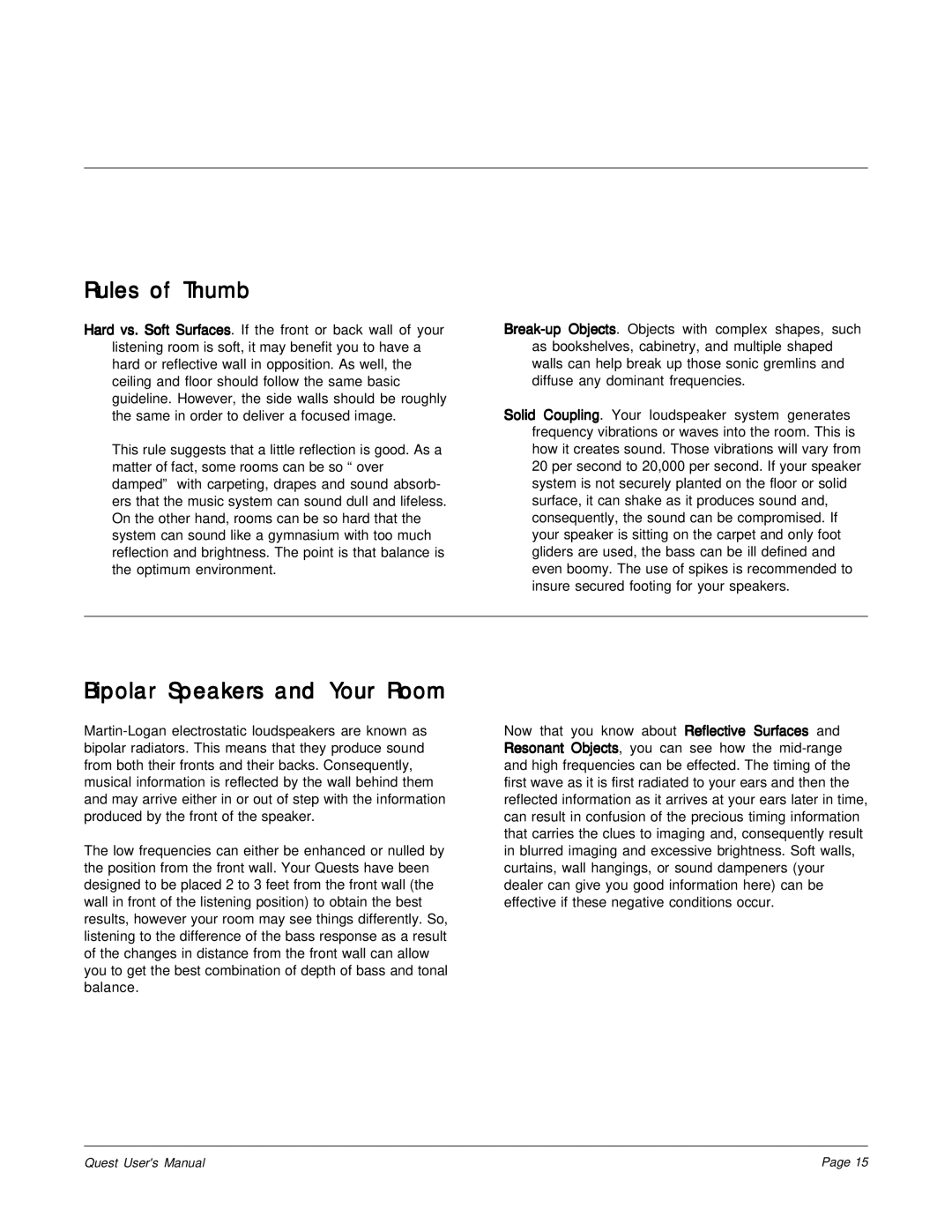
Rules of Thumb
Hard vs. Soft Surfaces. If the front or back wall of your listening room is soft, it may benefit you to have a hard or reflective wall in opposition. As well, the ceiling and floor should follow the same basic guideline. However, the side walls should be roughly the same in order to deliver a focused image.
This rule suggests that a little reflection is good. As a matter of fact, some rooms can be so “over damped” with carpeting, drapes and sound absorb- ers that the music system can sound dull and lifeless. On the other hand, rooms can be so hard that the system can sound like a gymnasium with too much reflection and brightness. The point is that balance is the optimum environment.
as bookshelves, cabinetry, and multiple shaped walls can help break up those sonic gremlins and diffuse any dominant frequencies.
Solid Coupling. Your loudspeaker system generates frequency vibrations or waves into the room. This is how it creates sound. Those vibrations will vary from 20 per second to 20,000 per second. If your speaker system is not securely planted on the floor or solid surface, it can shake as it produces sound and, consequently, the sound can be compromised. If your speaker is sitting on the carpet and only foot gliders are used, the bass can be ill defined and even boomy. The use of spikes is recommended to insure secured footing for your speakers.
Bipolar Speakers and Your Room
The low frequencies can either be enhanced or nulled by the position from the front wall. Your Quests have been designed to be placed 2 to 3 feet from the front wall (the wall in front of the listening position) to obtain the best results, however your room may see things differently. So, listening to the difference of the bass response as a result of the changes in distance from the front wall can allow you to get the best combination of depth of bass and tonal balance.
Now that you know about Reflective Surfaces and Resonant Objects, you can see how the
Quest User's Manual | Page 15 |
